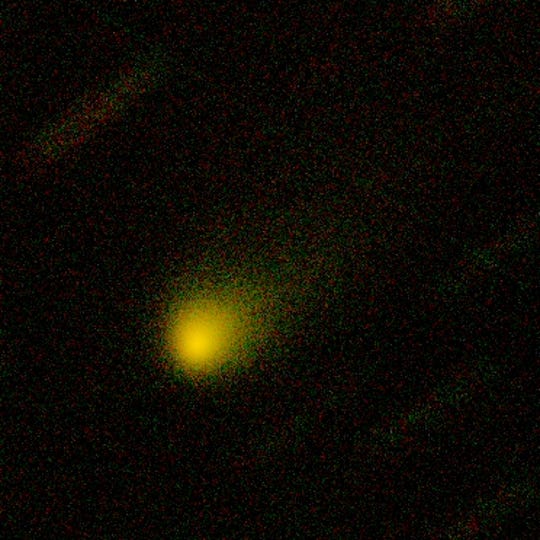
A newly discovered comet is definitely from outside our solar system, scientists confirmed in a study published Monday.
The study said that despite the comet’s interstellar origin, it looks surprisingly similar to comets from within the solar system.
It’s only the second interstellar comet ever detected in our solar system and the first that looks like a traditional comet, the study says. The first one, cigar-shaped ‘Oumuamua, which was discovered in 2017, did not resemble a comet in the usual sense:
“We immediately noticed the familiar coma and tail that were not seen around ‘Oumuamua,” said study co-author Michal Drahus of Jagiellonian University in Poland. “This is really cool because it means that our new visitor is one of these mythical and never-before-seen ‘real’ interstellar comets.”
Colin Snodgrass, an astronomer at Edinburgh University, who was not part of the study, told The Guardian that “this appears to be a completely unremarkable comet on a very remarkable orbit.”
The comet, dubbed 2I/Borisov, was discovered Aug. 30 by Gennady Borisov at an observatory in Nauchnij, Crimea.
A computer program specifically designed to spot interstellar objects confirmed the discovery in September. “This code was written specifically for this purpose, and we really hoped to receive this message one day. We only didn’t know when,” said Piotr Guzik of Jagiellonian University, who led the study.
2I/Borisov is inbound toward the sun, but it will remain farther than the orbit of Mars and will approach no closer to Earth than about 190 million miles in early December, NASA said.
It won’t be visible with the naked eye, but it can be viewed through professional telescopes. “The object will peak in brightness in mid-December and continue to be observable with moderate-size telescopes until April 2020,” NASA’s Davide Farnocchia said in a statement in September.
Monday’s study was published in the peer-reviewed British journal Nature Astronomy. Scientists said this is only a prologue to more thorough investigations and discoveries. “The comet is still emerging from the sun’s morning glare and growing in brightness,” said Waclaw Waniak of Jagiellonian University, co-author of the study.
“It will be observable for several months, which makes us believe that the best is yet to come,” Waniak said.
Guzik said, “We can safely say that research on this body will be transformative for planetary astronomy and a milestone for astronomy in general.”
